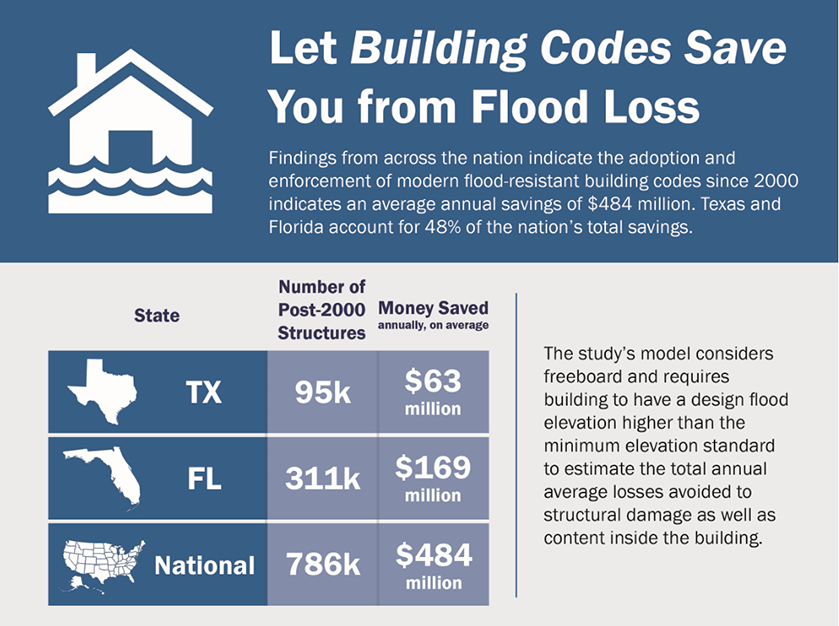One of the best ways to safeguard our communities against natural disasters is to adopt and follow up-to-date hazard-resistant building codes. Building codes are the minimum design and construction requirements to ensure safe and resilient structures.
These codes reduce casualties, costs and damage by creating stronger buildings designed to withstand disasters. They also help communities get back on their feet faster by minimizing indirect costs such as business interruptions and lost income.
Here are some ways that building codes can improve your community:
-
Buildings Codes Protect
Building codes protect you from a wide range of hazards – whether it is by implementing safe wiring, fire prevention, or stronger structural integrity. When a community has up-to-date building codes in place, they are more protected against these hazards.
-
Building Codes Work
In the study Building Codes Save, an analysis shows that, over a 20-year period, cities and counties with modern building codes have avoided at least $132 billion in losses from natural disasters. This is based on a comparison of jurisdictions without modern building codes. In addition, to the money saved, property damage is reduced. This means that immeasurable losses are also avoided, such as the stress of temporary relocation, lost income, and community disruption.

-
Building Codes Are Always Improving
You can trust that a building built to the latest codes are keeping up with the latest findings and advances in technology. Built on a solid foundation of decades of construction knowledge and experience, model building codes are updated every three years and incorporate new information such as results of post-disaster research. When a community adopts code updates, it involves a range of stakeholders who prioritize public health and safety with affordability in mind. In addition, there is an increased desire for sustainability and climate adaptation.
-
Building Codes Level the Playing Field
Building codes set common, minimum design and construction requirements across communities that result in improved construction quality, consistent permitting, and strong code enforcement. When neighboring communities follow and enforce the same rules, it makes it easier for smaller communities to work together through mutual aid agreements to enforce the code.
-
Building Codes Help Your Community
Implementing building codes can save a community money in reduced insurance premiums, lower bond ratings, and can help when applying for federal grant funds. For example, FEMA’s Hazard Mitigation Assistance grant programs provide funding for activities that reduce disaster losses and protect life and property from disaster damage. If your community is looking to adopt or improve their building code, they can apply for funds to help implement building code changes.
Your Voice Makes a Difference!
Greater public awareness, understanding of building codes and community efforts can make a big difference. To see what codes your community has adopted to protect you, you can visit sites like www.InspectToProtect.org. Once you know this information, you can reach out to your community’s decision makers to implement changes in your area that help make your community safer and stronger.
To read about how a North Carolina man implemented building codes to protect his own home from the risks of winds and flooding from hurricanes, visit the FEMA blog. For more information or resources on building codes, visit the Building Science page.

